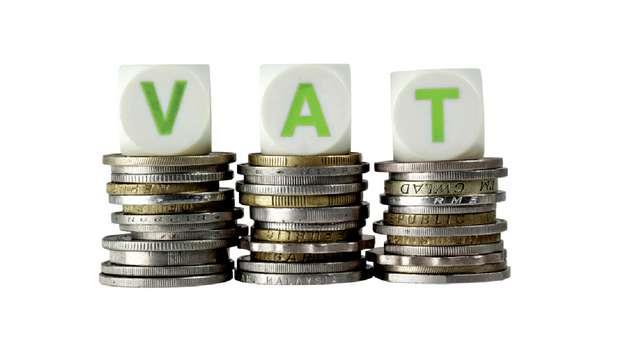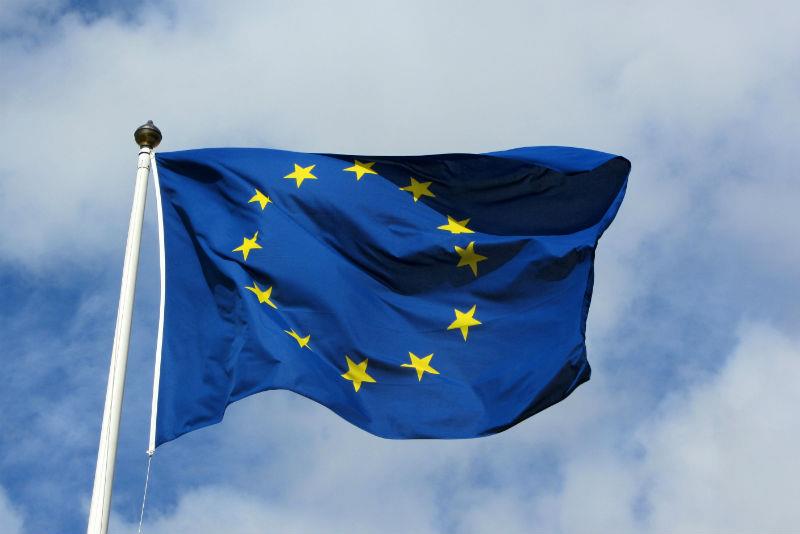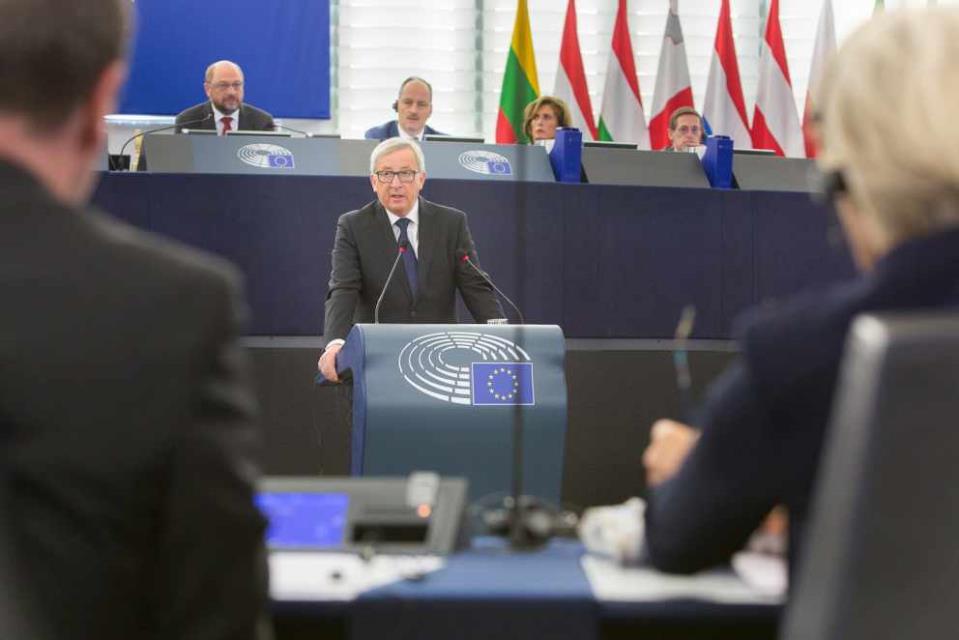EU Commission President Jean-Claude Juncker has presented five possible scenarios on how the Commission believes the EU could evolve by 2025 depending on the will of the European people, ranging from a shrinking of the EU's powers, to a defence union.
This White Paper is the Commission's attempt to "open an honest and wide-ranging debate with citizens on how Europe should evolve in the years to come. Every voice should be heard. The European Commission, together with the European Parliament and Member States, will host a series of "Future of Europe Debates" across Europe's national Parliaments, cities and regions. The ideas and determination of the hundreds of millions of Europeans will be the catalyst of our progress."
On 25 March 2017, EU leaders will meet in Rome for the 60th anniversary of the Rome treaties. Sixty years ago, the EU's founding members embarked on a unique and ambitious journey of European integration, agreeing to settle conflicts around a table rather than through war. As a result, Europe's troubled past has given way to peace spanning seven decades, and to an enlarged Union with one of the world's most prosperous economies. Many Europeans, however, consider the EU to either be too distant or too interfering in citizens' day-to-day lives. "Others question its added-value and ask how Europe improves their standard of living. And for too many, the EU fell short of their expectations as it struggled with its worst financial, economic and social crisis in post-war history. Europe's challenges show no sign of abating."

The starting point for each scenario is that the 27 Member States move forward together as a Union. The five scenarios are illustrative in nature to provoke thinking. They are not detailed blueprints or policy prescriptions. "Likewise, they deliberately make no mention of legal or institutional processes - the form will follow the function." The White Paper also states that the final outcome will undoubtedly look different to the way the scenarios are presented here. "The EU27 will decide together which combination of features from the five scenarios they believe will best help advance our project in the interest of our citizens."
1st scenario
The first scenario would see the EU27 stick to its course, and focus on implementing and upgrading its current reform agenda. Priorities are regularly updated, problems are tackled as they arise and new legislation is rolled out accordingly. As a result, the 27 Member States and the EU Institutions pursue a joint agenda for action. The speed of decision-making depends on overcoming differences of views in order to deliver on collective long-term priorities.
What would this mean for the EU by 2025? The EU27 would continue to focus on jobs, growth and investment by strengthening the single market and by stepping up investment in digital, transport and energy infrastructure.
"The positive agenda of action would continue to deliver concrete results, based on a shared sense of purpose. Citizens' rights derived from EU law will be upheld and the unity of the EU27 will be preserved but may still be tested in the event of major disputes. Only a collective resolve to deliver jointly on the things that matter will help close the gap between promises on paper and citizens' expectations."

2nd scenario
Scenario 2 would see the EU gradually re-centre on the single market.
"In a scenario where the EU27 cannot agree to do more in many policy areas, it would increasingly focus on deepening certain key aspects of the single market. There would be no shared resolve to work more together in areas such as migration, security or defence."
As a result, the EU27 would not step up its work in most policy domains. Cooperation on new issues of common concern would often be managed bilaterally.
This would mean that by 2025, the functioning of the single market becomes the main raison d'être of the EU27. Further progress would depend on the capacity to agree related policies and standards. This would prove easier for the free movement of capital and of goods, which continues tariff-free, than it does in other areas.
"Given the strong focus on reducing regulation at EU level, differences could persist or increase in areas such as consumer, social and environmental standards, as well as in taxation and in the use of public subsidies. This would create a risk of a 'race to the bottom'. "
This scenario could see the single currency put at risk, and would see more systematic checks of people at national borders due to insufficient cooperation on security and migration matters, the document read.
"The EU's re-centred priorities would mean that differences of views between Member States on new emerging issues often need to be solved bilaterally, on a case-by-case basis. Citizens' rights derived from EU law may become restricted over time, and decision-making may be simpler to understand but the capacity to act collectively would be limited. This may widen the gap between expectations and delivery at all levels."

3rd scenario
The third scenario focuses on a 'want more do more' approach.
In this scenario, the EU27 proceeds as it is today, however where certain member dtates want to do more in common, one or several 'coalitions of the willing' could emerge to work together in specific policy areas. These may cover policies such as defence, internal security, taxation or social matters.
As a result, new groups of Member States could agree on specific legal and budgetary arrangements to deepen their cooperation in chosen domains. As was done for the Schengen area or the euro, this can build on the shared EU27 framework and requires a clarification of rights and responsibilities. The status of other Member States is preserved, and they would retain the possibility to join those doing more over time.
This would mean that by 2025, several countries could have moved ahead in security and justice matters. They could decide to strengthen cooperation between police forces and intelligence services.
"The unity of the EU at 27 would be preserved while further cooperation is made possible for those who want. Citizens' rights derived from EU law start to vary depending on whether or not they live in a country that has chosen to do more. Questions would arise about the transparency and accountability of the different layers of decision-making. The gap between expectations and delivery could start to close in the countries that want and choose to do more."

4th scenario
The 4th Scenario would see the EU do less, more efficiently.
In a scenario where there is a consensus on the need to better tackle certain priorities together, the EU27 could decide to focus its attention and limited resources on a reduced number of areas. As a result, the EU27 could be able to act much quicker and more decisively in its chosen priority areas.
For these policies, stronger tools could be given to the EU27 to directly implement and enforce collective decisions, as it does today in competition policy or for banking supervision.
By 2025, this would mean that the EU27 steps up its work in fields such as innovation, trade, security, migration, the management of borders and defence. It develops new rules and enforcement tools to deepen the single market in key new areas.
In this scenario, The European Border and Coast Guard could fully take over the management of external borders. All asylum claims are processed by a single European Asylum Agency. Joint defence capacities are established. Conversely, the EU27 would stop acting or do less in domains where it is perceived as having more limited added value, or as being unable to deliver on promises.
"Ultimately, a clearer division of responsibilities would help European citizens to better understand what is handled at EU27, national and regional level. This helps to close the gap between promise and delivery, even if expectations remain unmet in certain domains. Citizens' rights derived from EU law could be strengthened in areas where the EU choose to do more and reduced elsewhere. To start with, the EU27 has real difficulty in agreeing which areas it should prioritise or where it should do less."

5th scenario
The fifth scenario would see the member states doing much more together.
In a scenario where there is consensus that neither the EU27 as it is, nor European countries on their own, are well-equipped enough to face the challenges of the day, member states could decide to share more power, resources and decision-making across the board. As a result, cooperation between all member states goes further than ever before in all domains.
Similarly, the euro area is strengthened with the clear understanding that whatever is beneficial for countries sharing the common currency is also beneficial for all. Decisions are agreed faster at European level and are rapidly enforced. By 2025, this would mean that on the international scene, Europe speaks and acts as one in trade and is represented by one seat in most international fora. The European Parliament would have the final say on international trade agreements.
Defence and security are prioritised in this scenario, and in full complementarity with NATO, a European Defence Union is created. Cooperation in security matters is routine.
In this scenario, "the EU27 continues to lead the global fight against climate change and strengthens its role as the world's largest humanitarian and development aid donor. The EU's broad-ranging foreign policy leads it to reinforce its joint approach on migration. Closer partnerships and increased investment in Europe's neighbourhood and beyond help to create economic opportunities, manage regular migration and tackle irregular channels. Within the EU27, there is a strong focus and ambition to complete the single market in the field of energy, digital and services. "
Through this scenario, there is far greater and quicker decision-making at EU level. Citizens would have more rights derived directly from EU law, however, there is the risk of alienating parts of society which feel that the EU lacks legitimacy or has taken too much power away from national authorities.
Next Steps
The White Paper is the European's Commission contribution to the Rome Summit, the moment when the EU will discuss its achievements of the past 60 years but also its future at 27. The White Paper marks the beginning of a process for the EU27 to decide on the future of their Union. To encourage this debate, the European Commission, together with the European Parliament and interested Member States, will host a series of 'Future of Europe Debates' across Europe's cities and regions.
The European Commission will contribute to the debate in the months to come with a series of reflection papers on:
- developing the social dimension of Europe;
- deepening the Economic and Monetary Union, on the basis of the Five Presidents' Report of June 2015;
- harnessing globalisation;
- the future of Europe's defence ;
- the future of EU finances.
Like the White Paper, the reflection papers will offer different ideas, proposals, options or scenarios for Europe in 2025 without presenting definitive decisions at this stage.